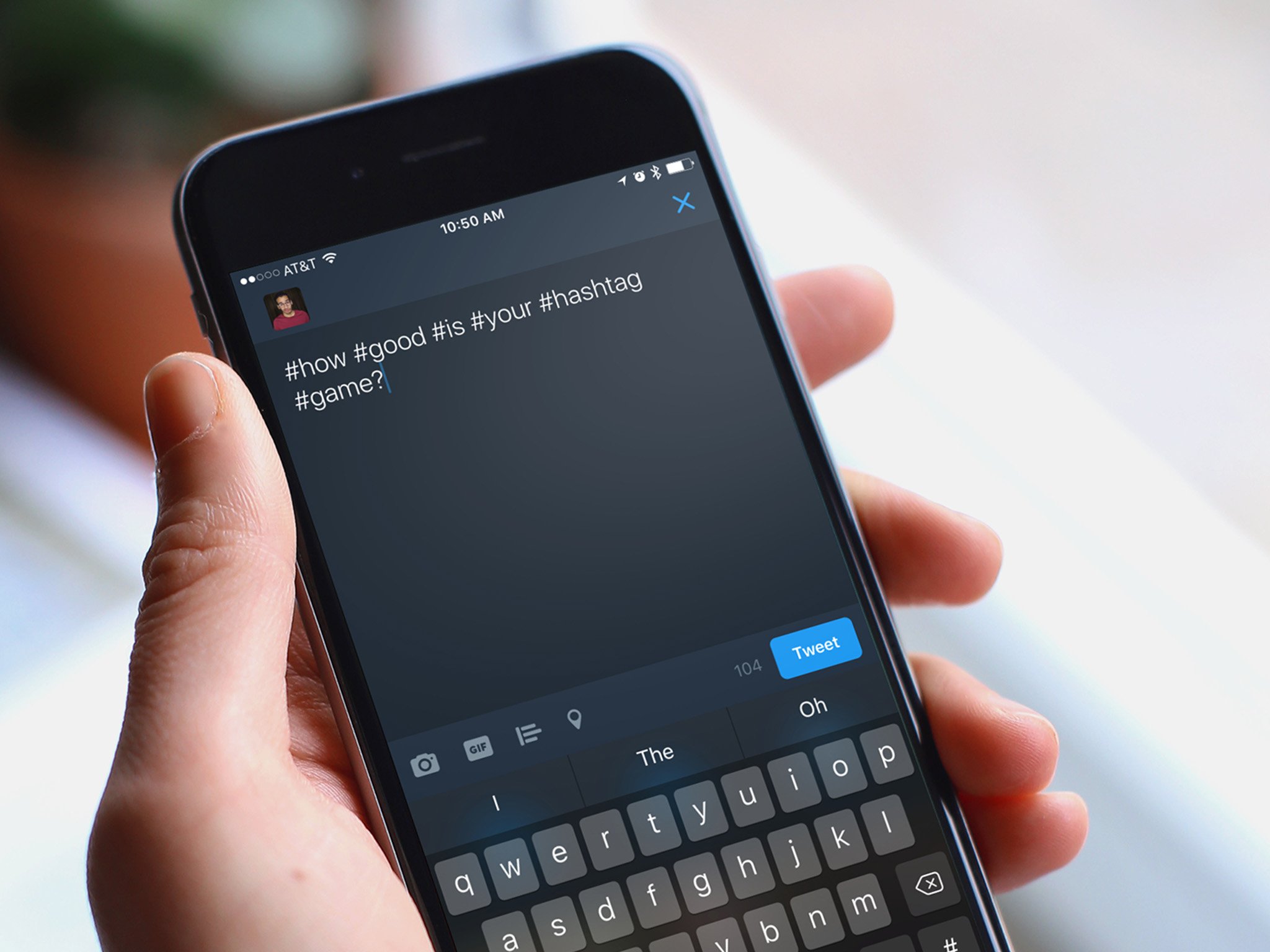How good is your #hashtag game?

The hashtag is a powerful tool for categorizing content, finding and participating in discussions, and organizing communication around a specific topic. It's also — depending on who you ask — a silly tool for brands and social media influencers to get more engagement (likes, views, retweets, shares, etc.) for their advertisements and posts. No matter how you feel about #hashtags, one thing's for sure: They're part of our modern culture — especially in media. You'd be hard-pressed to find a news broadcast, advertisement, or media promo that didn't include a hashtag somewhere. Put simply, there's no escaping hashtags so why not learn a little about them?
The history of hashtags
The first hashtag is said to have been created in August 2007 by Chris Messina. Messina was looking for a way to group related tweets together so folks could tune in and participate in discussions around particular topics and events.
how do you feel about using # (pound) for groups. As in #barcamp [msg]?how do you feel about using # (pound) for groups. As in #barcamp [msg]?— Chris Messina 🪬 (@chrismessina) August 23, 2007August 23, 2007
Nearly 10 years later, we're still using hashtags in much the same way: You write a tweet or a Facebook post about a particular topic, add a hashtag, and send your thoughts out into the internet; someone comes across the hashtag or searches for it and they can see your tweet or post, as well as any other tweets or posts using the same hashtag. It's simple, it's elegant, and it's pretty damned ingenious if you ask me!
Since the inception of the hashtag, the tool's use has morphed. You can use 'em to be silly and ironic, you can use 'em to spark conversation with strangers, you can use 'em for participating in national events, and you can use 'em to help others find (or hide) your posts. Yep, hashtags are pretty powerful.
How to use hashtags without driving your friends crazy
Hashtags are beautiful in their simplicity and universality. If a site supports hashtags, using them is simple: You simply need to add a pound symbol (#) before the word or words that you want to make your hashtag. Think of hashtags like keywords: short nouns and adjectives to describe the content you're sharing. You'll need to practice a little empathy, because your goal is to hashtag (yes, it can be used as a verb) your posts with keywords that you think others would associate with your content.
In this tweet, for example, we wanted to make sure when people were looking for posts about the Nintendo Switch they could find our how-to on creating a Nintendo Switch Dock sock. Because hashtags can only be a group of characters without spaces or punctuation (#Hey,Siri or #iPhone Portrait Mode won't work), we combined the two words together and added the pound symbol (#) at the front to make the hashtag #NintendoSwitch.
Let @Appaholik show you how to make this friggin' sweet #NintendoSwitch Dock sock.
Keep your screen scratch free!https://t.co/x7ZWLggUBm pic.twitter.com/RID8N4Eq0ULet @Appaholik show you how to make this friggin' sweet #NintendoSwitch Dock sock.
Keep your screen scratch free!https://t.co/x7ZWLggUBm pic.twitter.com/RID8N4Eq0U— iMore (@iMore) April 25, 2017April 25, 2017
In this Instagram post, I wanted people searching for posts about The Office to be able to find my HILARIOUS prank. I knew "office" wasn't going to be specific enough — that hashtag often leads to photos of peoples' home offices, stationary, etc. I took the title of the show and combined the words (remember, hashtags can't have punctuation or spaces) to create the hashtag #TheOffice. (P.S. Watch this video if you're wondering what the heck this post is about.)
Master your iPhone in minutes
iMore offers spot-on advice and guidance from our team of experts, with decades of Apple device experience to lean on. Learn more with iMore!
Generally speaking, you can use this same thought process when creating hashtags on any social media site. Whether your hashtag is one word (#dog) or multiple words (#TheLastJedi), think about the search terms people would use to come across your content. If you have a photo of a chihuahua and you want chihuahua lovers to find your photo, it's probably best to use the hashtag #chihuahua instead of hashtagging your pet's name (#henri).
Some Site-Specific Hashtag Tips
Different social media sites have different hashtag etiquette. You can choose to follow these pseudo-rules and suggestions or ignore them completely — it's entirely up to you! Your social media presence is your own and you should feel free to run things how you choose.
I have to admit, I try to avoid hashtagging on Twitter as much as possible. When I first joined Twitter in late 2008, I can remember being staunchly anti-hashtag. Hashtags get a bad rap due to their association with brands and — sigh — growth-hacking. Nefarious folks will add popular hashtags to their posts even if they're unrelated, because they know more people will see it. Pro tip: Don't do that.
Here are some quick tips for hashtagging on Twitter:
- Stick to the Messina way. The hashtag was created to group tweets according to topics; you should try to use them in this way. If there's a big conversation going on in the world (i.e. National Pet Day) and you want to tweet about it, use a relevant hashtag:
#NationalPetDay. - Avoid using keyword hashtags. It's best not to use multiple keyword hashtags on Twitter. It's a bad look to you post a photo of an ice cream cone and use your 140 characters for hashtags. Don't do this:
#icecream #strawberry #chocolate #wafflecone #sogood #summertreat #brrrr #yummy #food #treatyoself #tasty - Consider tagging your tweets for mute filters. Do you regularly tweet about something that many of your followers couldn't care less about? Consider using a hashtag that your followers can use as a mute filter.
- Watch your hashtag ratio. The number of regular, ol' words in your tweet should outnumber hashtags by quite a bit. If your tweet is mostly made up of hashtags, you're doing it wrong.
- Check out what's trending. Many of the trending topics on Twitter aren't hashtags at all, they're just words. When folks search for these trending topics, they'll see any tweets on that topic — even without the use of hashtags.
Facebook jumped on the hashtag train long after Twitter and it's still pretty rare (for me, at least) to see a regular user hashtagging their Facebook posts. That said, Facebook supports hashtags and you should definitely use them as you see fit!
Here are some quick tips for hashtagging on Facebook:
- Let your post inform your hashtagging. Facebook supports many different types of post and you should use the type of post to inform you hashtag use. If you're posting about a car you want to sell, use keyword hashtags like there's no tomorrow. If you're talking about a movie trailer, stick to topic hashtags.
- Consider your post privacy. Check out your privacy settings before you hashtag your posts. Facebook has a bajilliondy users so if you're not in the mood for strangers sharing their thoughts in your post's comments section, you might want to make your post more private or skip the easily searchable hashtag.
Instagram is all about the hashtag. When you're looking for adorable dog photos, new recipes, craft ideas, etc., chances are you're finding these posts based on hashtags. Your Instagram hashtag game will determine who comes across your posts and how frequently they do.
Here are some quick tips for hashtagging on Instagram:
- Keywords, keywords, keywords. Because Instagram is primarily for sharing photos and videos, your hashtags should be keywords. If you're posting a photo of an adorable chihuahua in a sweater, you should be using hashtags like
#dog #puppy #chihuahua #adorable #cute #sweater #pupper #tinydog #dogsinclothes #aww. The idea is to describe your post using hashtags so people can come across your adorable photo(s) when they're searching. - Keep your captions clean. According to Instagram etiquette, you should keep your captions short, simple, and hashtag free. The trick is to pop your hashtags into a comment on your post instead of in the caption. Some people will even add a series of periods (.) before their hashtags because Instagram automatically hides longer comments to cut down on clutter.
- Consider your Instagram goals. If you're on Instagram to get new followers and get a ton of likes and comments on your posts, OWN IT! Use as many relevant hashtags as you like and use them frequently. If you're on Instagram to share photos with friends and family and the likes and comments don't matter that much to you, don't feel like you have to step up your hashtag game.
Other tips
There are plenty of other social media sites that support hashtags and have their own rules surrounding their use. If you use the tips I've mentioned above to help inform your hashtagging technique on other sites, I think it'll go swimmingly. The most important thing you can do is know what kind of post you're creating and what you hope to gain by using hashtags. Once you've got that figured out, you can decide whether you need loads of keyword hashtags, a couple topic hashtags, or a sprinkling of ironic hashtags.
Questions?
There's a lot to consider when you're using hashtags (not least of which is whether you want to use hashtags in the first place)! If you have any particular questions or need any clarification, leave a comment below or shoot me a message over on Twitter so we can … 🙂➡️😎 … hash it out.
Mikah Sargent is Senior Editor at Mobile Nations. When he's not bothering his chihuahuas, Mikah spends entirely too much time and money on HomeKit products. You can follow him on Twitter at @mikahsargent if you're so inclined.

